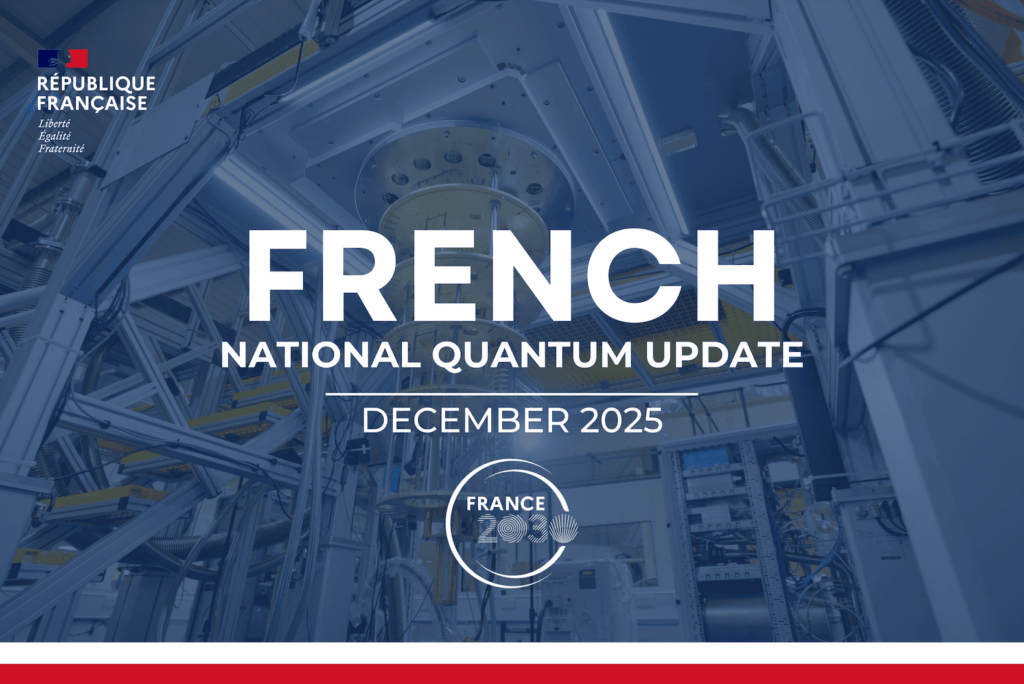Exposing the emptiness of the h-word: how claims of hyperbole ring hollow; and how nobody, not even today’s experts, can possibly know the limits of Quantum.
By Shai Phillips
President, PSIRCH
In a monthly editorial in The Quantum Insider, PSIRCH’s President, Shai Phillips, will conduct a first-of-its-kind audit of broad industry-internal accusations of exaggeration in quantum computing and associated fields. How much truth there is to them will be the focus of this series.
“How many people realize that, when they use a quantum computer, they are going into extra dimensions. Extra dimensions are always presented as such a science-fictiony thing. But the mathematics of quantum mechanics is very clearly multi-dimensional. This abstraction in mathematics is how nature operates. It sounds like science fiction, but it’s not. It’s just science. Everything so far, you could have done with a classical computer. We already knew the outcome of every experiment. But now, we actually can’t predict what the Eagle will find.” — Dario Gil – Senior Vice President and Director of IBM Research

- Expert views in Quantum support the outlook that quantum computing is set to change the world, meaning far-reaching generalized projections regarding Quantum are valid and not hyperbolic.
- There is strong evidence quantum computing will aid in artificial intelligence/ machine learning, including with exponential speedups when quantum data is involved, in training AI, and in generalizing, thus some skeptical statements by experts do not tell the full story, and can be misleading to various audiences.
- Even expert claims of hyperbole, largely due to the impracticality of qualifying all remarks, can be inaccurate, ironically hyperbolic, and have the potential to retard progress in Quantum. Thus, a cessation of such claims will be beneficial.
Part I – Introduction
For various reasons, many quantum experts who participated in conversations that led to the findings and discussions in this series were not able to be quoted by name. I am truly grateful to these unsung heroes for their valuable help in getting to the bottom of some highly complex subject matter. This series is dedicated to them.
SPRINGS AND ELASTIC BANDS
Springs and elastic bands were strewn across the lab. Some of my classmates were diligently working to solve assigned problems, others just messing around. It didn’t matter. I had lost interest a long time ago. That’s what I remember of physics class in high school – springs and elastic bands. I don’t know whether to blame the British science curriculum, my teacher, or both, but it wasn’t until I discovered quantum mechanics that I realized what a travesty this had been. How many other students had been turned away from physics for this same reason? When I discovered what physics was truly about, the unbelievable reality of how dramatically differently the universe behaves compared to our everyday experiences, I was blown away, and I was hooked, drinking in everything I could get my hands on. Initially, I didn’t dream that there would be commercial applications, I was just drawn to the power of it. That was the second revelation – that we were unlocking the secrets of the universe and manipulating them to our advantage. Nothing could be a more exciting prospect. It would take enormous vision and hard work, to say the least, but it was happening.
Of course, even with quantum computing, in this multidisciplinary field, engineering, mathematics, physics, and computer science combine to build the nuts and bolts, and must get granular and detailed about it. When technical experts go into the lab, their day-to-day is not the magic of a Stephen Hawking book, but rather its own version of “springs and elastic bands” …tuning lasers, orchestrating RF pulses, poring over mind-bending math… enjoyable in parts, no doubt, but hardly the big epic picture. Perhaps that was the lesson I was supposed to learn during my uninspiring physics classes at school: that no matter how high the airplane can soar, at the end of the day, you first have to get through the tedium of forcing the basic underlying mechanics to work.
THE H-WORD
So it’s no surprise that even some experts can become mired, and when others divert to the big picture trajectory, it can seem deeply at odds with the present reality. And that’s when you hear it… the h-word. I’ll say it once for context, and then “hype” will instead be referred to simply as the h-word whenever possible (though it will often be impossible to avoid). Why? Because, well-intentioned though some may be in using it, it has become a plague, a cancer in the quantum industry. In reality, it not only has no meaning, but may be damaging and harmful to progress, thus it should be discarded for good when talking about quantum related research and development. This will be the focus of this article series, with in-depth explanation, justification, & clarification.
First, it bears mentioning that the h-word is not typically used in reference to claims about actual quantum computing hardware. To take another fact from Dario Gil: “By the time you have 100 perfect [entangled] qubits… if you needed to describe them using zeros and ones, you would need to devote every atom of planet earth to store [them]… By the time you have 280 qubits, you would need every atom of the known universe.” These unfathomable datapoints remain uncontested. Even now IBM has a working 433-qubit processor called “Osprey”, and has just released a 1,121-qubit chip called “Condor”, which was announced late last year. Full disclosure: it’s no secret that the number of qubits is hardly the be-all-end-all, with other aspects such as gate fidelity, etc. being equally crucial factors, resulting in new nomenclature such as “quantum volume”. Nonetheless, the qubit count remains one of the most important parts of scaling up to mature, sophisticated, and practically applicable quantum computers.
Second, it bears mentioning that the h-word is also rarely used in reference to claims about current capabilities of quantum computing. Rather, it picks on claims of future capabilities – projections, in essence, of what quantum computing will or won’t be able to do at some point in the future. Needless to say, none of us have a crystal ball, and even experts are frequently wrong about such predictions – one need only tune into CNBC or Bloomberg and listen to stock market-guru forecasts to verify that fact, especially last year, in 2023, when almost all the experts, and every cynic was wrong!
GENERALIZED PREDICTIONS
So now we understand that the h-word specifically attacks claims of future quantum computing capabilities, there are two types we may consider: generalized claims; and specified claims. This article will not deal with the first type, for the very reason just mentioned – no one can predict the future. It’s that simple. Crying foul using the h-word over generalized claims relating to future capabilities of quantum computing is baseless nonsense. Clearly, they may be right or wrong, as far as anything is possible, but there is overwhelming evidence to support the far-reaching potential of the technology, and plenty of expert support. For instance, as I was told by Bob Coecke, the Chief Scientist at Quantinuum (the world’s largest quantum computing company) that quantum computing will “change the world”. If Bill Gates can say that about Chat GPT, it’s certainly a feasible claim for quantum computing, which is bleeding edge tech, arguably in equal measure to, or even beyond, the potential of generative AI. In fact, quantum computing may well powerfully buttress generative AI. We’ll get to that.
So why, then, when an article in InvestorPlace, quoted Haim Israel, Head of Global Thematic Investing Research at Bank of America, saying quantum computing will be “bigger than fire, bigger than the wheel,” has it become fashionable to poke fun? Israel makes a valid projection. Sure, the language is flowery, and I might have chosen the internet, or personal computers, as my analogies. I may have even equated them, rather than give a projection of exceeding them, but it’s essentially the same point that experts endorse: quantum computing will change the world. To what extent, is anyone’s guess.
It’s also interesting to note that Israel was not the only one to make such a grandiose analogy, nor was he the most authoritative. At the 2021 World Economic Forum, the advent of quantum computing was likewise compared to “the use of fire” by none other than a foremost leading expert in the field – Prof. Jeremy O’Brien, CEO & co-founder of PsiQuantum (one of the most successful quantum computing companies worldwide), with a PhD in Quantum Technologies from UNSW, formerly Director of the Centre for Quantum Photonics & Professor of Physics and Electrical Engineering at the University of Bristol. Funny, we didn’t hear any smug mockery, ridicule, or laughter when he said it. And for good reason…
Consider the smart phone, for example – we take it for granted these days, but this ubiquitous item is a gargantuan feat of science and technology. It IS arguably “bigger than fire, bigger than the wheel” in many respects, yet if you had predicted it before the advent of integrated circuits, you would have been laughed out of the room. In actuality, you would have been a visionary. Moreover, you would have been right.
SPECIFIED PREDICTIONS
So, all that’s left are specified claims of future quantum capabilities – the crux of this article – and why the h-word truly has no meaning, and should be axed once and for all, for all the harm it may be doing. To examine this, we’ll consider various claims of the h-word made by renowned Computer Scientist, Scott Aaronson, both in a long-ago popular article of 2008, as well as QCWare’s 2021 Q2B conference, to bridge the gap.
It must first be said, Professor Aaronson is one of the most prominent and respected quantum computing experts on the planet, not to mention an affable and accessible person, if ever there was one. In my research, for many whom I contacted, Aaronson was unsurprisingly their “go-to” in the space of quantum complexity theory. It thus merits mentioning that his opinions and pronouncements carry substantial weight. That said, expert views do not necessarily equate to facts. In fact, claiming they do is an established logical fallacy known as ‘The Appeal to Authority’ (i.e. ‘they’re right because they’re experts’ is not sound logic). At the same time, as the magnanimous professor explained to me over breakfast at a little café in Austin, there isn’t always time to offer up caveats and qualifications for every remark – a point well taken, and perhaps that’s one of the reasons why the h-word, especially coming from so visible a leader in the industry, has the potential to do harm, instead of inspire and inform.
In 2008, Professor Aaronson wrote a popular article called “The Limits of Quantum”. We can comfortably assume that Aaronson refers here only to computing, and not to the plethora of other quantum technologies, such as sensing, communications, etc.… In this piece, quantum computers are ironically referred to as “magic” computers, and the popular perception of them compared to fictions of “warp-drive generators” and “anti-gravity” machines. Aaronson, it seems, was understandably exasperated by the many misunderstandings that people had, especially back then, but even now, about what quantum computers could provably do. In particular, the idea of parallel computation and the prospect of solving exponentially hard problems. And now begins our journey down the rabbit hole. Strap in, or at least get comfortable – this is where it gets tricky…
(Tune in next time, as we take a deeper dive into computational complexity theory.)
If you found this article to be informative, you can explore more current quantum news here, exclusives, interviews, and podcasts.
















